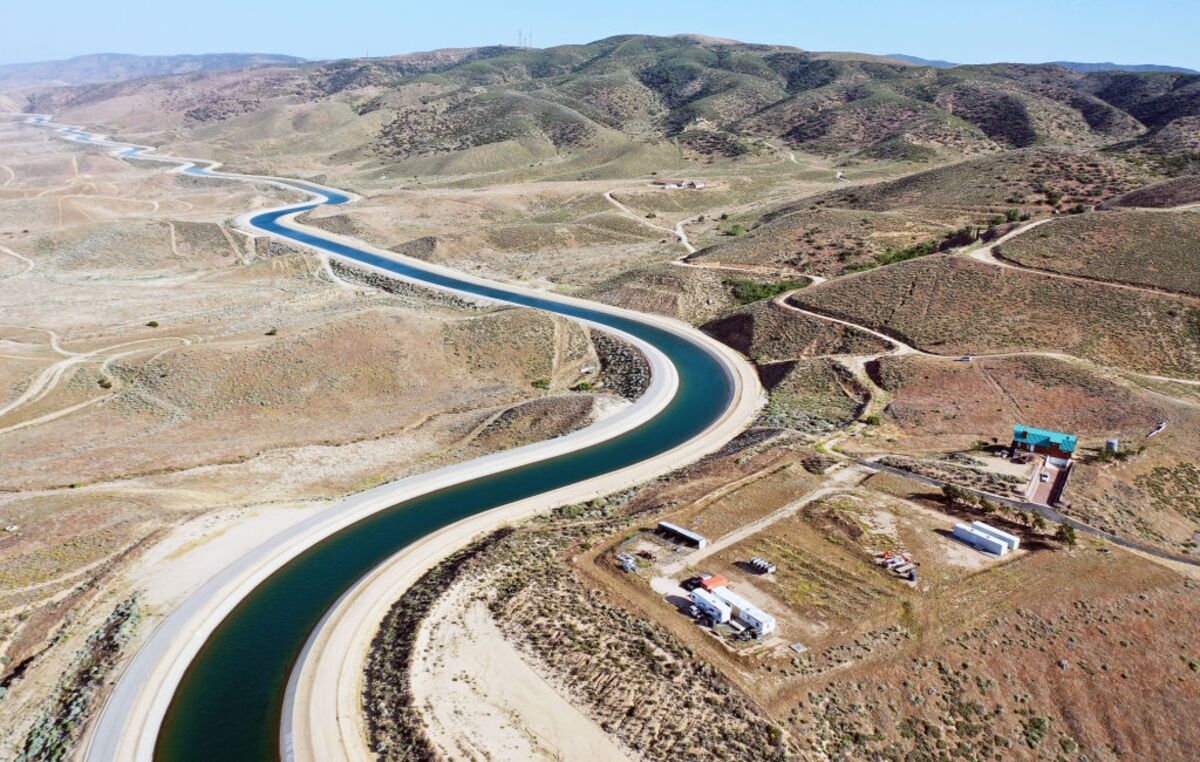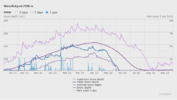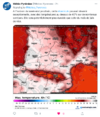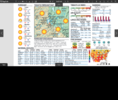There is no end in sight for
California’s drought. The state’s 39 million people are growing accustomed to the reality that there is not enough water for everyone — agriculture, industry, homeowners, fish and wildlife. Small water systems are in crisis. With groundwater supplies collapsing, many wells in rural areas have run dry, requiring water to be trucked in. A paucity of rain has made wildfire a persistent menace up and down the state.
Political fights over access to water will surely intensify as drought continues and shortages are prolonged. But according to
Jay Lund, a professor of civil and environmental engineering at the University of California at Davis, the direction of those contests is becoming clear. In addition to his work on flood control and environmental water usage, Lund is an expert at modeling and optimizing California’s water supply. I spoke to him via email this month and last. A lightly edited transcript follows.
Francis Wilkinson: When we spoke last summer, you were
optimistic about California’s capacity to manage drought and still prosper. Since then, the drought has not gotten better — although there was some welcome snow in the Sierra Nevada in April. Are you more worried now or are you still confident that California has enough water for its economy and its people?
Jay Lund: Most of California’s economy and people will be fine, despite being affected by this drought. There will be substantial water shortages for some major urban areas, and bigger effects on forest and fish ecosystems, agriculture, many rural wells, and some small water systems. All told, it will probably be comparable to last year and to the 2014 and 2015 drought years. Those droughts produced several billion dollars of economic losses. But you have to keep in mind that those losses are sustained within a statewide economy that exceeds $3 trillion per year.
Q: Southern California depends on water from sources elsewhere — including the Colorado River and rivers in Northern California. Those rivers are failing to supply enough water for all the various entities that depend on them. What happens if those rivers don’t recover, and water supplies are further constrained?
A: About a third of Southern California households have been restricted to watering their lawn once per week, which should lead to a 20% to 30% reduction in water use for those households. But harsher conditions have so far been avoided because Southern California can draw on water from sources other than the Colorado River and Northern California. They can purchase water from other districts. For example, San Diego has not yet required mandatory water use reductions. In addition, Southern California has made great strides in water storage and permanent per-capita use reductions. Finally, waste-water re-use and ocean desalination have modestly increased water supplies.
Despite those successes, the Colorado and other rivers are perhaps in a prolonged “megadrought,” exacerbated by the higher temperatures of recent years. If these conditions continue or worsen, the water that Southern California has managed to store during wet years will be depleted, and water-use restrictions and purchases of water from farmers will necessarily increase.
Q: How much drought can the state take before it more aggressively prioritizes water usage, restricting water to less productive entities? And is the market or the state the ultimate decision maker, given so many competing interests?
A: The state has already restricted water allocations from major water projects to cities and farms. It has also curtailed surface-water diversions. Some of these reductions are pretty serious. California agriculture this year is likely to experience an overall reduction of 30% or more in surface water availability, which is similar to reductions last year and the drought years of 2014 and 2015. Some of those reductions will be eased by additional groundwater pumping and water purchases from farms that fallow fields previously devoted to lower-revenue crops.
Most of the “water market" consists of individual transactions negotiated among willing buyers and sellers, including farmers, irrigation districts and cities. The market is decentralized, but fairly effective at compensating farmers who transfer their water allotments to others who are struggling to keep orchards alive.
Q: Replacing surface water with groundwater pumping has produced some disastrous consequences, leading to dry wells and land subsidence so severe that infrastructure, including roads and bridges, have buckled. With aquifers depleted, isn’t more groundwater pumping just exacerbating the problem?
A: Additional agricultural pumping during droughts tends to deepen groundwater overdraft and leave rural wells dry. On the other hand, the additional pumping reduces agricultural and community economic losses from drought. The state has developed programs to identify households and rural communities with dry wells and supply them with bottled water, deeper wells or connections to neighboring water systems. Nevertheless, this remains a big problem in rural areas. Recent state legislation, which phases in regulations to end groundwater overdraft, should help stabilize groundwater levels and reduce the number of wells going dry during drought, but this will remain a problem. Ultimately, ending groundwater overdraft will require the long-term fallowing of a lot of agricultural land.
Q: In addition to reduced water availability, high temperatures are also increasing agricultural demand for water. The Public Policy Institute of California, a think tank that you’re affiliated with,
estimates that warmer temperatures in 2021 — almost 3.5 degrees Fahrenheit above the 20th-century average — led to an 8% increase in crop water demand last year. So even if conservation efforts somewhat mitigate water loss, you have increased heat causing a spike in demand. Doesn’t something pretty significant have to give here?
A: Yes. Climate change has billions of dollars of implications for California’s economy. Some localities and regions will feel the impacts more acutely, especially agricultural areas, which are already fallowing hundreds of thousands of acres to end groundwater overdraft. In addition, the ecological effects of climate change are fundamentally reshaping the ecology of California’s forests and are making aquatic ecosystems even harder to manage.
Q: So, due to water scarcity, some rural areas will have to make the transition to a nonagricultural future?
A: An economic base that involves less irrigated agriculture would be more sustainable and more resilient to drought. For example, we can continue to shift land use from lower-valued crops to solar-power generation. But only a small portion of fallowed agricultural land will make that transition. Most of that land will simply become dry-land habitat, perhaps with low-intensity grazing. Rural communities in these areas will shrink unless they develop economic activities that are less reliant on water.
Q: One frequent suggestion along those lines is to phase out water-intensive crops such as almonds and replace them with less thirsty crops. But you have championed a different approach — prioritizing high-value crops over lower-value crops. Can you explain that?
A: What is happening is investment in crops with high profits per drop of water use, and the fallowing of crops with low revenue per drop of water use. Even though almonds use a bit more water per acre than, say, corn, they typically provide much more revenue per drop of water. Prioritizing crops based on minimal water use rather than on profitability would likely increase rural poverty.
Q: Given how much water is devoted to urban and suburban landscaping, wouldn’t it make more sense to restrict water for landscaping before imposing further restrictions on agriculture?
A: Maybe. But urban California uses only one-fifth as much water as the state’s agriculture does. So agriculture will have to use less water no matter what happens in the cities and suburbs. A rising price for agricultural water seems the best way to accomplish the necessary reduction in water use. Even if urban areas managed to meet all their water needs through recycling, desalination and conservation, our ecosystems and agriculture would still be in drought, because these are much bigger water users.
Q: Presuming drought is persistent, how does California look a decade from now? How will agriculture be different? How will consumers be affected?
A: Irrigated agriculture will occupy a noticeably smaller area of California. The remaining crops, on average, will produce higher revenues per drop. Cities will use less water, by engineering more water re-use, better water banking, and higher reliability and conservation.
But there is no escape from drought in California. Cities must be prepared for substantial water rationing in extreme cases. Forests will have fewer trees per acre, and different tree species in many areas. Aquatic ecosystems, sadly, are likely to have greater populations of non-native species.
California will always suffer from water problems, but most of the state’s economy can remain prosperous and healthy with proper management. Cities have considerable room to reduce per-capita water use. Agriculture, while shrinking in area and water use, seems likely to continue to grow economically with higher yields and more profitable crops.
California has continued to grow and prosper for 150 years despite its changing and challenging water problems. Managing ecosystems will remain the most difficult challenge for the state.
More From Bloomberg Opinion:







